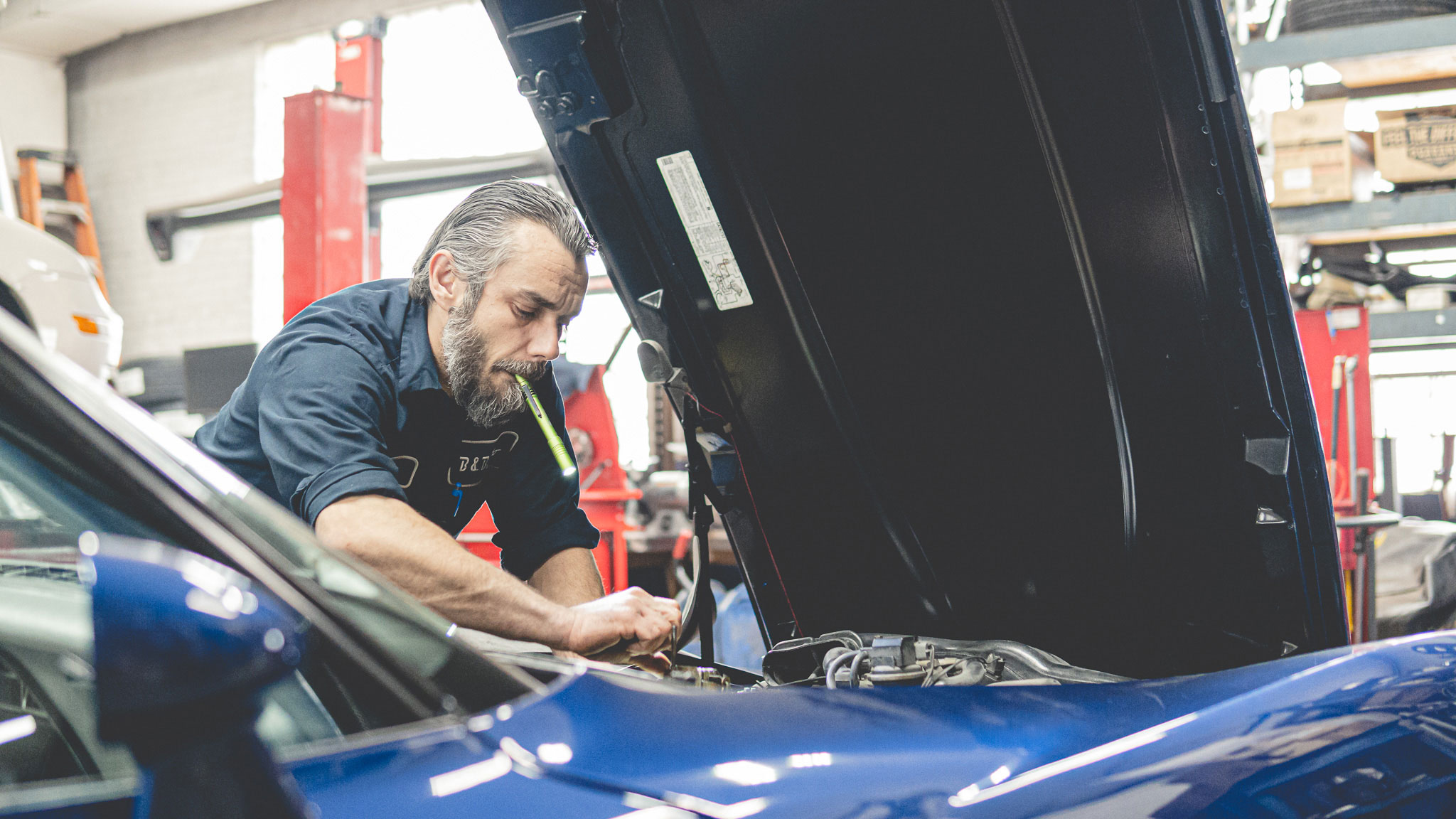All Categories
Featured
When it pertains to preserving an automobile, understanding the differences in between routine repair and maintenance is necessary for auto owners. Both facets are required for the longevity and reliability of your auto, yet they serve distinct purposes and are taken care of in different ways. By knowing when to do normal maintenance versus when to resolve repair services, you can keep your car running smoothly and avoid costly shocks.
![]()
Routine Maintenance: Prevention is Trick. Routine upkeep involves the routine, precautionary treatment that your vehicle needs to prevent future issues. It is usually arranged at particular periods, such as every 3,000 or 5,000 miles, based on your automobile's manual or supplier suggestions. Regular maintenance aids make certain that your car stays in ideal condition, protecting against wear and tear from creating significant problems down the line.
Some typical examples of regular upkeep consist of:
Oil Changes: Routine oil modifications are important to keep your engine lubricated and running effectively. Oil helps in reducing rubbing in between engine components, avoiding getting too hot and unnecessary wear. Tire Maintenance: This consists of tire turnings, balancing, and checking tire stress. Proper tire maintenance guarantees much better fuel effectiveness, taking care of, and tire long life. Brake Inspections: Regular checks on your brakes, consisting of pads and fluid levels, can capture any potential issues early, protecting against brake failure and making sure safety. Liquid Checks and Top-Ups: Guaranteeing your cars and truck has the appropriate degrees of coolant, transmission fluid, power guiding liquid, and brake fluid is very important for general car health and wellness. Air Filter Replacement: Changing the air filter guarantees that your engine gets tidy air, which assists it run extra successfully and minimizes engine pressure. Regular upkeep is typically arranged and does not include repairing any type of broken parts-- it has to do with maintaining whatever in excellent working order and avoiding future breakdowns.
Fixes: Dealing With the Unexpected. Repairs, on the other hand, are needed when something goes wrong with your car. Repair services deal with issues that impact the auto's efficiency or security and need to be fixed asap. Unlike upkeep, which is preventative, repairs typically occur when components have worn, fell short, or malfunctioned.
Instances of common repairs include:
Transmission Issues: If your vehicle is having trouble moving gears or experiences slipping, the transmission might need repair work or replacement. Engine Failure: If your engine begins misfiring, overheating, or stalling, it may require considerable repairs or replacement of elements like the timing belt, pistons, or seals. Brake Repairs: While brake pads become part of regular maintenance, if your brakes are making a grinding sound or are no much longer working appropriately, brake repairs will certainly be required, such as changing the calipers or the rotors. Battery Substitute: If your automobile won't begin or the battery is no more holding a fee, you'll require a substitute battery, which is a repair work. Suspension and Steering Repairs: Problems with the suspension or guiding system-- such as problem steering or a rough trip-- can be signs that parts like struts or shock absorbers require repair service. Repair services are generally much more expensive and urgent than routine maintenance. They are needed when something breaks or malfunctions, which can affect the car's functionality and safety and security.
Secret Distinctions In Between Regular Repair And Maintenance. Timing: Routine upkeep is preventative and carried out at arranged intervals, while fixings are responsive and occur when something goes incorrect. Expense: Upkeep is typically much less expensive, as it involves monitoring and changing smaller sized components or liquids. Repair services, particularly significant ones, often tend to be more expensive as a result of the intricacy of dealing with broken or malfunctioning parts. Objective: The objective of upkeep is to keep your automobile running well and prevent problems. Fixings, on the other hand, are necessary to take care of concerns that have actually currently taken place. Frequency: Routine upkeep takes place continually at set periods (e.g., every 5,000 miles), while repair work are less predictable, commonly taking place when parts fail or wear out unexpectedly. Why Both are essential. Both routine upkeep and repair work are essential for the lasting health and wellness of your automobile. Routine maintenance aids maintain your vehicle running smoothly and can stop many common issues from creating to begin with. By remaining on top of set up solutions, you can address tiny troubles before they develop into expensive repair services.
![]()
Nonetheless, repairs are sometimes unavoidable. Despite having the very best maintenance, parts wear over time, and unanticipated problems can occur. When repair services are needed, resolving them immediately can avoid additional damages and guarantee your car's safety and dependability.
Final thought. In recap, understanding the difference in between routine upkeep and fixings aids you take the right actions to take care of your vehicle. Regular maintenance can save you cash by preventing bigger problems, while repair services are required when something goes wrong. By remaining proactive with upkeep and dealing with fixings when needed, you can expand the life-span of your car and guarantee that it remains to carry out at its ideal for years ahead.

Routine Maintenance: Prevention is Trick. Routine upkeep involves the routine, precautionary treatment that your vehicle needs to prevent future issues. It is usually arranged at particular periods, such as every 3,000 or 5,000 miles, based on your automobile's manual or supplier suggestions. Regular maintenance aids make certain that your car stays in ideal condition, protecting against wear and tear from creating significant problems down the line.
Some typical examples of regular upkeep consist of:
Oil Changes: Routine oil modifications are important to keep your engine lubricated and running effectively. Oil helps in reducing rubbing in between engine components, avoiding getting too hot and unnecessary wear. Tire Maintenance: This consists of tire turnings, balancing, and checking tire stress. Proper tire maintenance guarantees much better fuel effectiveness, taking care of, and tire long life. Brake Inspections: Regular checks on your brakes, consisting of pads and fluid levels, can capture any potential issues early, protecting against brake failure and making sure safety. Liquid Checks and Top-Ups: Guaranteeing your cars and truck has the appropriate degrees of coolant, transmission fluid, power guiding liquid, and brake fluid is very important for general car health and wellness. Air Filter Replacement: Changing the air filter guarantees that your engine gets tidy air, which assists it run extra successfully and minimizes engine pressure. Regular upkeep is typically arranged and does not include repairing any type of broken parts-- it has to do with maintaining whatever in excellent working order and avoiding future breakdowns.
Fixes: Dealing With the Unexpected. Repairs, on the other hand, are needed when something goes wrong with your car. Repair services deal with issues that impact the auto's efficiency or security and need to be fixed asap. Unlike upkeep, which is preventative, repairs typically occur when components have worn, fell short, or malfunctioned.
Instances of common repairs include:
Transmission Issues: If your vehicle is having trouble moving gears or experiences slipping, the transmission might need repair work or replacement. Engine Failure: If your engine begins misfiring, overheating, or stalling, it may require considerable repairs or replacement of elements like the timing belt, pistons, or seals. Brake Repairs: While brake pads become part of regular maintenance, if your brakes are making a grinding sound or are no much longer working appropriately, brake repairs will certainly be required, such as changing the calipers or the rotors. Battery Substitute: If your automobile won't begin or the battery is no more holding a fee, you'll require a substitute battery, which is a repair work. Suspension and Steering Repairs: Problems with the suspension or guiding system-- such as problem steering or a rough trip-- can be signs that parts like struts or shock absorbers require repair service. Repair services are generally much more expensive and urgent than routine maintenance. They are needed when something breaks or malfunctions, which can affect the car's functionality and safety and security.
Secret Distinctions In Between Regular Repair And Maintenance. Timing: Routine upkeep is preventative and carried out at arranged intervals, while fixings are responsive and occur when something goes incorrect. Expense: Upkeep is typically much less expensive, as it involves monitoring and changing smaller sized components or liquids. Repair services, particularly significant ones, often tend to be more expensive as a result of the intricacy of dealing with broken or malfunctioning parts. Objective: The objective of upkeep is to keep your automobile running well and prevent problems. Fixings, on the other hand, are necessary to take care of concerns that have actually currently taken place. Frequency: Routine upkeep takes place continually at set periods (e.g., every 5,000 miles), while repair work are less predictable, commonly taking place when parts fail or wear out unexpectedly. Why Both are essential. Both routine upkeep and repair work are essential for the lasting health and wellness of your automobile. Routine maintenance aids maintain your vehicle running smoothly and can stop many common issues from creating to begin with. By remaining on top of set up solutions, you can address tiny troubles before they develop into expensive repair services.

Nonetheless, repairs are sometimes unavoidable. Despite having the very best maintenance, parts wear over time, and unanticipated problems can occur. When repair services are needed, resolving them immediately can avoid additional damages and guarantee your car's safety and dependability.
Final thought. In recap, understanding the difference in between routine upkeep and fixings aids you take the right actions to take care of your vehicle. Regular maintenance can save you cash by preventing bigger problems, while repair services are required when something goes wrong. By remaining proactive with upkeep and dealing with fixings when needed, you can expand the life-span of your car and guarantee that it remains to carry out at its ideal for years ahead.
Latest Posts
Discover Leading Flooring Brands
Published Nov 27, 24
1 min read
How to Choose the Perfect Venue for Your Event
Published Nov 27, 24
1 min read
Contact Us
Published Nov 27, 24
1 min read